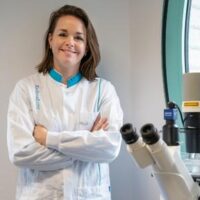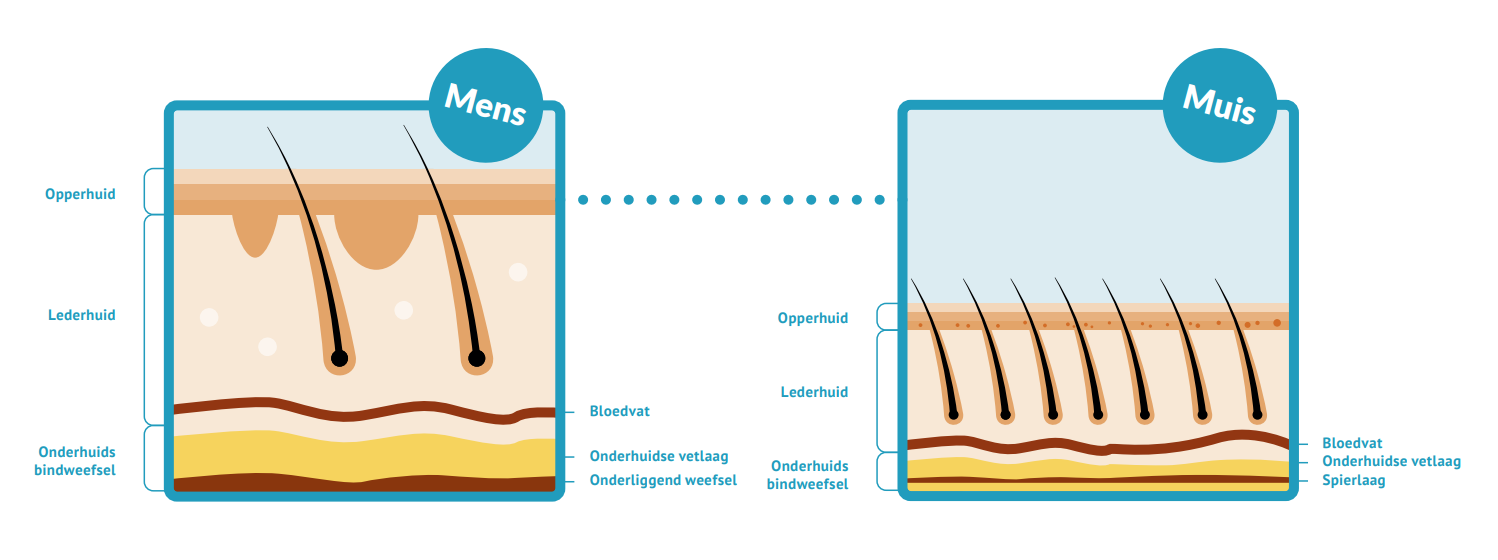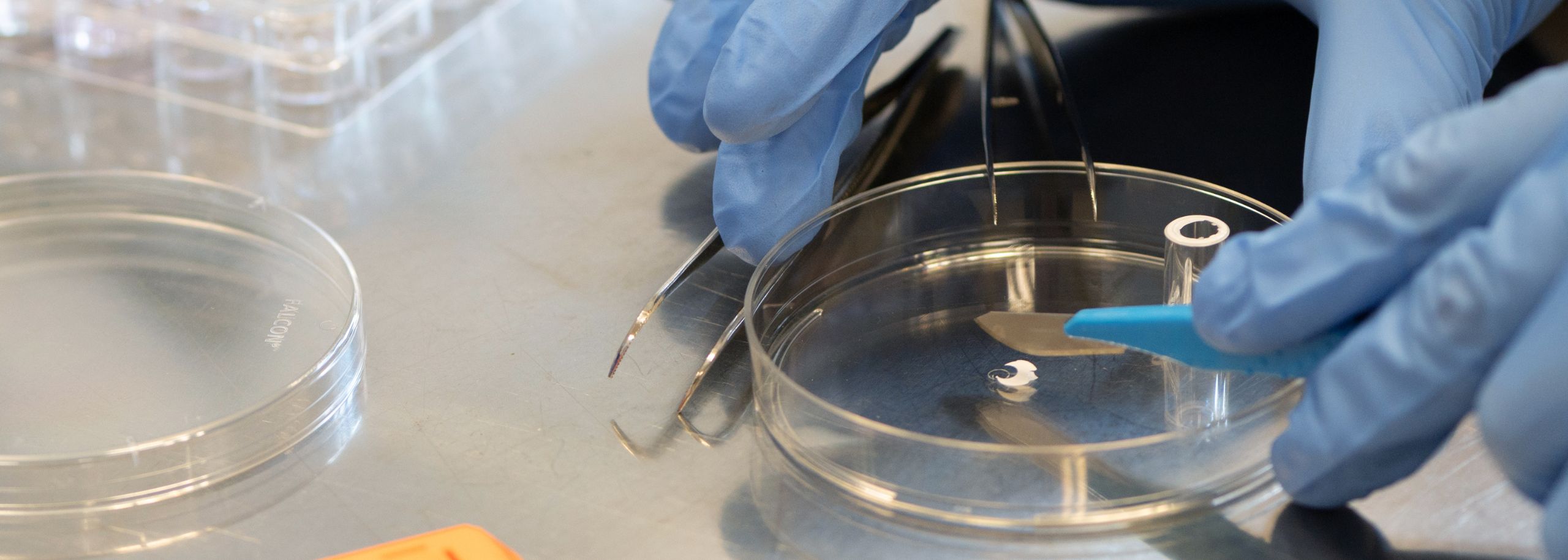Our skin is the largest organ of the human body. And just like any other organ, the skin can become ill. Think, for example, of eczema, acne, or psoriasis. The search for a cure to these skin diseases has cost thousands of mice their lives – without success.
Prof. Dr. Ellen van den Bogaard takes a different approach by using an animal-free skin model. And thanks to a new development, the human skin can now be even better replicated in the model than before. This brings animal-free skin research even closer!

Recap: how does Ellen’s research work?
For years, Ellen has been using human skin cells to create a 3D skin model that is able to grow pieces of human skin. This not only replaces animals in skin research, but also allows for better research into skin diseases. Thanks to our donors, we are able to contribute financially to this important project.
How does the research work? The cells come from healthy volunteers or patients and are, for example, taken from residual tissue left over after a cosmetic procedure. Ellen explains it like this: “By multiplying the cells in the lab, we can grow new pieces of skin with our 3D model. These pieces have the same properties as human skin, allowing drugs to be tested effectively.”

Differences between mouse and human skin. The image above shows the differences between the skin of a human and a mouse. A human has thick and firm skin – but a mouse has thin skin and a fur coat. So how reliable is skin research on mice?
One step further due to fungi and bacteria
One of our skin’s most important features is the micrbiome: also known as the bacteria and fungi that live on our skin. These bacteria and fungi protest our skin, but if they become imbalanced, they can cause problems such as acne or eczema.
On our skin, you will find these bacteria and fungi on our epidermis – or the upper layer of our skin. But when simulating human skin in a petri dish, Ellen and her team saw that the bacteria evaded the epidermis and reached the lower layers of the skin through the sides of the dish, thus resulting in the simulated skin’s death. This limited the accuracy of skin research.
They have now solved this problem. By placing a glass tube with open ends (a cylinder) on the middle of the simulated skin, and then placing the microbiome inside it, they managed to prevent the bacteria and fungi from reaching the lower layers of the skin. This allows Ellen and her team to study the natural interaction between the microbiome and the simulated skin for the first time. The new method is simple and widely applicable. Ellen says: “Placing the cylinder is not exactly rocket science, and you don’t need expensive new equipment for it.”
With this method, we can not only replace animals in skin research, but possibly also in other research areas in the future.

